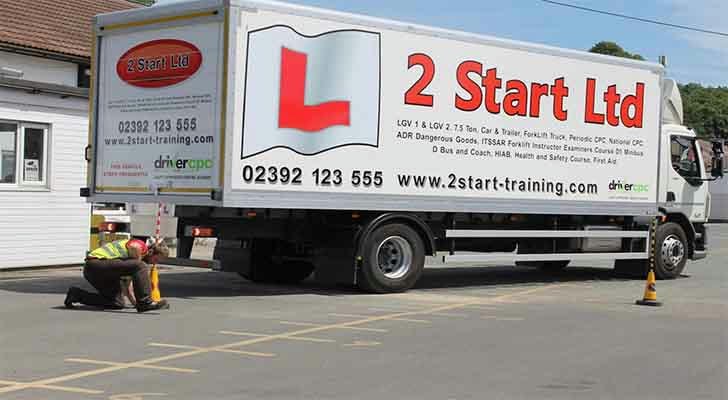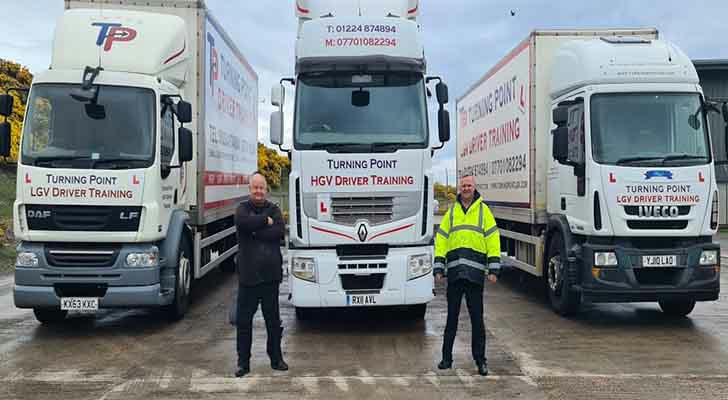How Long Does HGV Training Take? Fastest Route to Getting Your License

Becoming an HGV (Heavy Goods Vehicle) driver not only opens the door to stable job opportunities but also offers the potential for a high salary. However, many people worry about the lengthy training process that could delay their employment. So, how long does HGV training really take? And how can you speed up the process? This article will break down the training process and provide strategies for getting your license as quickly as possible.
Complete HGV Training Process and Time Estimates
The time required for HGV training varies depending on personal background, training institutions, and exam scheduling. Here’s a breakdown of the standard training process and the time each phase typically takes:
1. Applying for Your HGV Provisional License (1-2 weeks)
First, you need to complete the D2 (application form) and D4 (medical form) and submit them to the DVLA (Driver and Vehicle Licensing Agency). The medical check can be done at a private clinic or GP and usually takes 1-3 days. After this, the provisional license application will be processed. Typically, this can take 5-10 working days. However, if there are mistakes or missing information, this could be delayed by 1-2 weeks.
2. Theory Test Preparation and Passing (1-4 weeks)
The theory test consists of two parts: multiple-choice questions (100 questions) and a hazard perception test (19 video scenarios). The time you need to prepare depends on your grasp of the material. Some people can master it in a week, while others might need 3-4 weeks to study thoroughly. To avoid delays, it’s best to start studying for the theory test as soon as you apply for your provisional license, so you can book your test immediately after receiving it.
3. Practical Driving Training (5-10 days)
The actual driving training generally takes 5-10 days, with courses typically involving 6-8 hours per day. The training covers vehicle operation, road safety regulations, reversing, and mock driving tests. Training times can vary depending on the institution. If you choose a private company, you may benefit from a more condensed and efficient program, reducing the overall training duration.
4. CPC Certification (1-2 weeks)
Obtaining CPC (Certificate of Professional Competence) is a key step for HGV qualification. The CPC consists of two parts:
• Module 2: Case study (theory test)
• Module 4: Practical test (vehicle safety checks and handling)
Many training institutions offer specialized CPC courses, which can help boost your pass rate. After passing both modules, you’ll receive the Driver Qualification Card (DQC), making you a certified HGV driver.
5. Practical Test (1-2 weeks)
The practical driving test evaluates your skills in reversing, safety at intersections, and vehicle inspections, among other tasks. If you pass the test, you could receive your license within a week. However, if you fail, you will need to rebook the test, which will lead to additional waiting time.

How to Speed Up the HGV Training Process
If you're aiming to get your license as quickly as possible, here are some strategies:
1. Prepare for the Theory Test While Waiting for Your Provisional License
Many people wait until they receive their provisional license to start studying for the theory test, which wastes valuable time. Instead, begin studying for the theory exam as soon as you apply for your provisional license, so you can book the exam right away once your license arrives.
2. Choose Intensive Training Courses
Opting for an “intensive one-week course” can dramatically reduce your training time. These courses typically involve 6-8 hours per day of concentrated learning, which can help you finish faster than traditional 2-4 week courses. Intensive programs are ideal for those who need to complete training quickly.
3. Book Your Exams Early to Avoid Delays
The waiting period for HGV theory and practical exams is typically 2-4 weeks, and during peak times, it can take even longer. To avoid unnecessary delays, schedule your exams as early as possible, even before starting training. Some training centers also offer expedited booking services to help reduce waiting time.
4. Choose a High-Pass-Rate Training Institution
Not all training providers are equal. Institutions with higher pass rates usually offer more efficient training and better preparation for exams. When selecting a training center, check their pass rates, review feedback from past students, and ensure they offer mock exams and practical drills to increase your chances of success.
5. Maximize Your Chances of Passing First Time
The pass rates for the HGV theory exam are typically 50-60%, while practical exam pass rates are around 50-70%. To maximize your chances of passing on the first attempt, consider doing mock exams and participating in refresher courses. Use official DVSA apps for theory revision, and focus on critical skills like reversing, intersection safety, and vehicle checks to boost your confidence and exam readiness.

Fastest Time vs. Standard Training Time
Typically, the fastest time to complete HGV training is 4-6 weeks, while the standard training process usually takes 8-12 weeks. The fastest route involves careful planning, selecting intensive courses, booking exams early, and enhancing your chances of passing each test on the first attempt.
Conclusion
If you're eager to start your HGV career quickly, efficient planning and training are essential. By opting for intensive training courses, early exam bookings, and choosing a provider with a high success rate, you can significantly reduce your training time and obtain your license in as little as 4-6 weeks. With the right strategy, you can fast-track your journey to becoming a certified HGV driver and enjoy a rewarding career.
